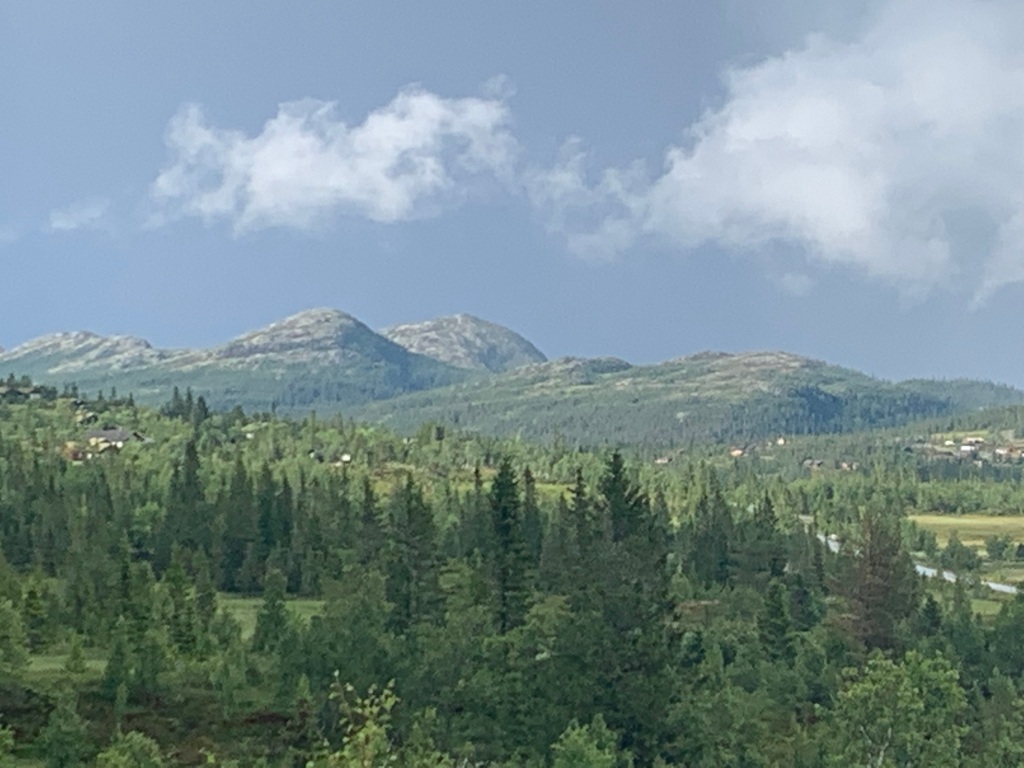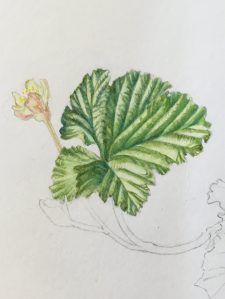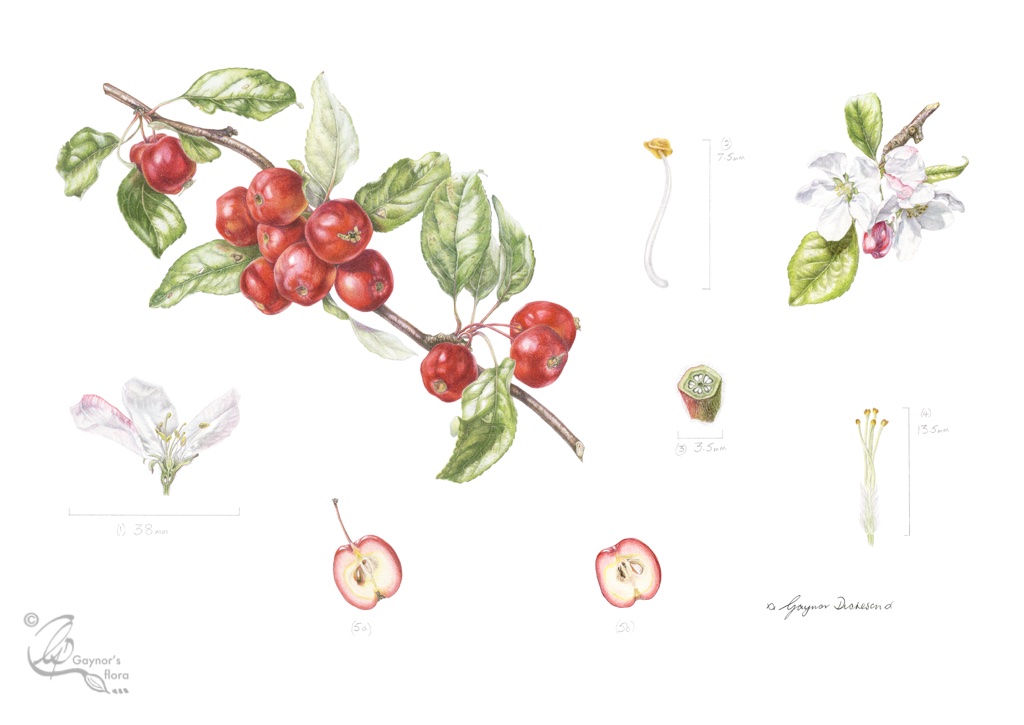
As promised, this is the second part to the blog about my series of pictures – Foraging plants in the Norwegian Mountains. It will continue twice weekly until the RHS exhibition mid June 2023.
But what did make me choose this topic to study? It started at the workshop I had in Åsgårdstrand in 2014.

There were students from Norway, the USA and the UK, and I wanted them to get a feel for and learn about some of the plants that mean a lot to Norwegians. Funnily enough, like me, Norwegians take a lot of their fruit for granted and don’t know too much about them. I asked a botanist friend to get some plants when she was at her cottage in the mountains; she arrived with several, including cloudberry (Rubus chamaemorus). This particular year she only found male flowers, but more about this later. At that point I didn’t know they were male flowers; I was just disappointed that none seemed to be fertilised and developing fruit.
As the students were mostly new to botanical art, it was unsurprising that no-one had any real interest in painting the cloudberry plant without the flowers in full bloom.
But all were thrilled by the range of wildflowers available and painted many they found whilst on walks in the neighbourhood. For my part, the cloudberry plant material was enough to kickstart my interest in studying it. Painting the sample available was the start of my obsession for Norwegian edible fruit; it continued until I finished the series of seven pictures in January 2023
Royal Horticultural Society (RHS) botanical exhibition planning

Over the years the requirements for exhibiting with the RHS have changed. I had previously done two exhibits for the RHS botanical art shows and had medals from 2011 and 2014. In 2011, 8 pictures were required for each exhibit and in 2014 this was reduced to six although one could have more. When planning for my next exhibit I decided to do seven pictures as odd numbers are aesthetically more pleasing than even numbers.
I will be describing my progress with all seven pictures in my blog, although the exhibit requirements is now only six pictures. I felt Norwegian edible plants would be an ideal topic and had hoped to complete the series over the following three years, but ‘life’ got in the way.
I was responsible for the UK representation during the Botanical Art Worldwide Exhibition in 2018. Scotland had their own exhibit.
My involvement in the worldwide exhibition happened quite suddenly when I realised that the UK would not be represented. I felt this was wrong as we had so many brilliant botanical artists. So I was determined to make it happen; Robin, my husband, suggested that if we got enough people interested, we should call ourselves the Association of British Botanical Artists (ABBA). Luckily, I was able to convince others and ABBA organised several successful events across the country representing UK botanical artists.
During the build -up to the Botanical Art Worldwide exhibition, it became clear that there was a need for an organisation to welcome ‘Anyone, anywhere’ interested in botanical art. Up until then it could be quite expensive to learn about botanical art and membership of existing organisations was based on an individual’s level of expertise. Dr Shirley Sherwood OBE was also of a similar opinion and supported the idea – something that really meant a lot to me and my motivation for continuing my work to establish an organisation.

The Association of Botanical Artists (ABA), now an international organisation, is still going strong.

Eventually, as I got back to planning my next RHS exhibit I recognised that there were some logistic problems. I lived in the UK and hadn’t planned to move back to Norway. Although some of the plants grew in high mountain areas in the UK, there were still some difficulties obtaining what I needed. For example, there were very few female cloudberry plants and therefore only a slim chance of getting material for either the female flowers or fruit. I therefore needed to get to Norway on a regular basis and knew that I could only do this once a year.
I already had another workshop planned in Norway for 2015, so 2016 became the target for starting seriously with preparation sketches

I realised that I wouldn’t be able to decide which part of the plants to focus on until I had done as many sketches as possible at different stages of development.
I would need to make careful notes about colour and size of specimens to aid my decision making.
I will continue this story with a new blog on 26 March 2023.
